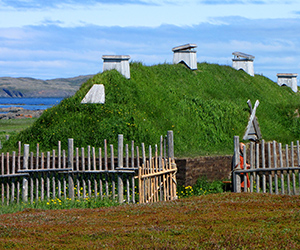CANADA HISTORY
English Invasion

The English invasion of New France during the late 1620s marked a pivotal moment in the early history of Canada. This invasion, spearheaded by the Kirke brothers, dramatically interrupted the development of the fledgling French colony and threatened to erase the efforts of Samuel de Champlain and the settlers who had established a foothold in the St. Lawrence Valley. The English assault on Quebec City in 1629, coupled with the capture of crucial French supply fleets, brought New France to the brink of collapse, highlighting the vulnerability of the French colony and the fierce competition between England and France for dominance in North America.
Champlain’s Push for Growth in New France
By the late 1620s, Samuel de Champlain recognized that New France required significant investment and support if it were to survive in the face of growing English aggression and internal challenges. The fur trade, while profitable, was insufficient to build a robust and resilient colony capable of withstanding external threats. Champlain realized that New France needed a stronger foundation—more settlers, military protection, and sustainable resources—to fend off increasing English encroachment in the region.
In 1627, Champlain returned to France and appealed to Cardinal Richelieu, the most powerful minister in King Louis XIII’s court. Champlain’s vision for New France as an economic and strategic asset aligned with Richelieu’s ambition to expand France’s influence abroad. Richelieu, seeing the potential of New France, helped establish the Company of 100 Associates, a powerful trading company that was tasked with fortifying the colony and growing its population by sending settlers and supplies. Champlain was appointed Lieutenant to the Viceroy of Quebec, and the Company sent out its first fleet to reinforce the colony.
The English Threat and the Kirke Brothers
While Champlain and Richelieu made plans to strengthen New France, England was already eyeing the region for its own expansion. The Kirke brothers—David, Thomas, and Lewis—commanded an English privateering fleet with the goal of disrupting French shipping and cutting off New France from its lifeline of reinforcements and supplies. The Kirkes, operating under English orders, sought to capitalize on the tensions between France and England and secure control of the valuable St. Lawrence River, a key artery into the interior of North America.
In the summer of 1628, the first blow came when the Kirke brothers intercepted the French fleet carrying 400 colonists and 20 ships filled with supplies and military reinforcements. The two fleets were both forced into Gaspé Bay to shelter from a storm. It was here that the Kirke brothers captured the entire French fleet and sent it back to England as prizes. The loss of this fleet was catastrophic for New France. With its supplies cut off, the colony was left vulnerable and isolated, setting the stage for the English invasion of Quebec City.
The Siege and Fall of Quebec
In 1629, the Kirkes launched their decisive attack. With no fresh supplies from France and little military strength left to defend it, Quebec’s situation was dire. Champlain, understanding the peril the colony was in, did his best to prepare the city for a siege, but without reinforcements, the colony was severely weakened. On July 19, 1629, the English fleet, under David Kirke, sailed up the St. Lawrence River and laid siege to Quebec. Champlain, recognizing that the city had no means to hold out, was forced to surrender without a fight.
The fall of Quebec to the English was a devastating blow to French ambitions in North America. Champlain himself was taken prisoner and sent to England, where he would soon learn that the war between England and France had officially ended three months prior to Quebec’s capture, with the signing of the Treaty of Suza. The capture of Quebec was technically a violation of the peace, but for Champlain and the French settlers, the immediate consequences were harsh. New France had been seized by the English, and its future appeared uncertain.
The Restoration of New France
While the Kirkes’ capture of Quebec was a major victory for the English, the French government quickly moved to reverse the situation. The ongoing negotiations between Charles I of England and Louis XIII of France ultimately led to the Treaty of Saint-Germain-en-Laye in 1632, which included a provision that would return New France to French control. As part of the treaty, France agreed to settle a previous debt by paying one million livres to England, in exchange for which the English relinquished their hold over New France.
Champlain, now freed from captivity, returned to Quebec in 1633 to resume his role as Governor. His return marked the reestablishment of French control over the colony and a renewed effort to fortify and expand New France. While the English invasion had briefly interrupted the growth of the colony, it also underscored the vulnerability of New France and the necessity for stronger defenses and more settlers. Champlain’s leadership in the aftermath of the invasion helped rebuild the colony, laying the groundwork for its expansion throughout the St. Lawrence Valley and into the Great Lakes region.
The Significance of the English Invasion
The English invasion of New France in 1629 was one of the earliest direct confrontations between the two European powers in North America, and it had lasting implications for the history of Canada. The fall of Quebec revealed how precarious the French presence in the region was and highlighted the importance of securing the colony’s access to France through the St. Lawrence River. The strategic importance of Quebec, as the gateway to the interior of the continent, made it a target for English ambitions and a critical point of defense for France.
The invasion also demonstrated the increasingly global nature of the conflict between England and France. While much of the rivalry between the two nations played out in Europe, North America became an important theater of competition. The English capture of Quebec in 1629 foreshadowed the larger struggles that would occur between France and England throughout the 18th century, culminating in the Seven Years’ War and the eventual British conquest of all of New France.
The episode also underscored the need for better coordination and communication between the French crown and its colonies. The fact that Quebec was captured months after the war between England and France had technically ended showed the limitations of communication across the Atlantic and the difficulties of maintaining control over distant colonies. For the settlers in New France, the experience of being briefly under English rule reinforced their resolve to defend their colony and maintain its French identity.
The English invasion of New France in 1629 was a defining moment in the early history of Canada. While it marked a temporary setback for the French colony, the eventual restoration of New France through diplomatic negotiations underscored France’s commitment to its North American holdings. Champlain’s leadership during this crisis, both before and after the fall of Quebec, ensured that New France would not only survive but continue to grow and expand in the decades to come.
The brief period of English control over Quebec was a stark reminder of the fragility of European colonies in North America during this period, and it highlighted the importance of strategic fortifications, supply lines, and the loyalty of settlers. For Canada, the events of 1629 set the stage for the ongoing rivalry between France and England, a rivalry that would shape the future of the continent and ultimately lead to the creation of modern Canada.
Cite Article : www.canadahistory.com/sections/documents




